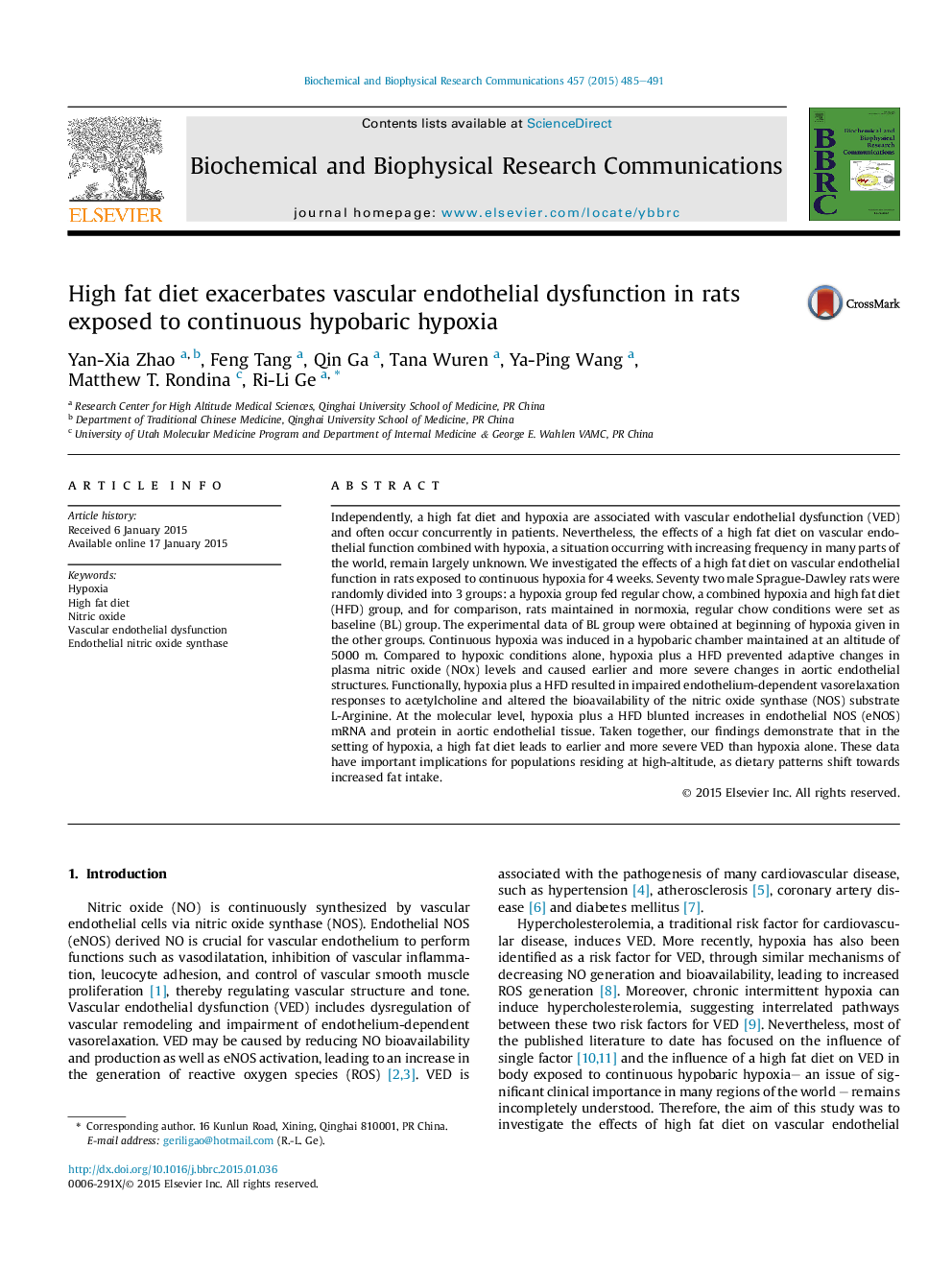| Article ID | Journal | Published Year | Pages | File Type |
|---|---|---|---|---|
| 10752975 | Biochemical and Biophysical Research Communications | 2015 | 7 Pages |
Abstract
Independently, a high fat diet and hypoxia are associated with vascular endothelial dysfunction (VED) and often occur concurrently in patients. Nevertheless, the effects of a high fat diet on vascular endothelial function combined with hypoxia, a situation occurring with increasing frequency in many parts of the world, remain largely unknown. We investigated the effects of a high fat diet on vascular endothelial function in rats exposed to continuous hypoxia for 4 weeks. Seventy two male Sprague-Dawley rats were randomly divided into 3 groups: a hypoxia group fed regular chow, a combined hypoxia and high fat diet (HFD) group, and for comparison, rats maintained in normoxia, regular chow conditions were set as baseline (BL) group. The experimental data of BL group were obtained at beginning of hypoxia given in the other groups. Continuous hypoxia was induced in a hypobaric chamber maintained at an altitude of 5000Â m. Compared to hypoxic conditions alone, hypoxia plus a HFD prevented adaptive changes in plasma nitric oxide (NOx) levels and caused earlier and more severe changes in aortic endothelial structures. Functionally, hypoxia plus a HFD resulted in impaired endothelium-dependent vasorelaxation responses to acetylcholine and altered the bioavailability of the nitric oxide synthase (NOS) substrate L-Arginine. At the molecular level, hypoxia plus a HFD blunted increases in endothelial NOS (eNOS) mRNA and protein in aortic endothelial tissue. Taken together, our findings demonstrate that in the setting of hypoxia, a high fat diet leads to earlier and more severe VED than hypoxia alone. These data have important implications for populations residing at high-altitude, as dietary patterns shift towards increased fat intake.
Keywords
Related Topics
Life Sciences
Biochemistry, Genetics and Molecular Biology
Biochemistry
Authors
Yan-Xia Zhao, Feng Tang, Qin Ga, Tana Wuren, Ya-Ping Wang, Matthew T. Rondina, Ri-Li Ge,
